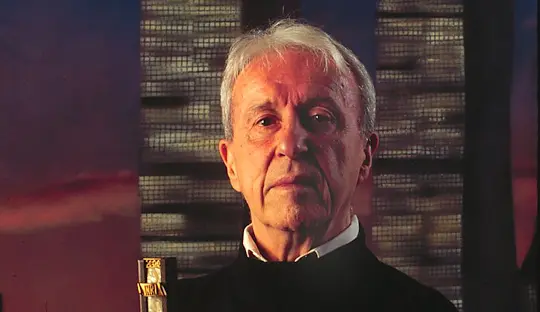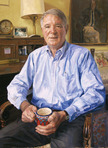Review: Hostage to the Devil
I mentioned having bought this book when I bought Glimpses of the Devil. The two books are quite different, not only in the authors’ styles, but also, Glimpses is a scientific report by an amateur exorcist. Hostage is a researched report on the experiences of six, third party exorcists. Glimpses is a psychiatrist’s report; Hostage is the report of a high-ranking priest in the Roman Catholic Church. Still, the two books come to the same conclusions about the reality of demonic possession and the methods of exorcism.
Wikipedia says that the author, “Malachi Brendan Martin (23 July 1921 – 27 July 1999), also known under the pseudonym of Michael Serafian, was an Irish-born American Traditionalist Catholic priest, biblical archaeologist, exorcist, palaeographer, professor and writer on the Catholic Church.
“Ordained as a Jesuit, Martin became Professor of Palaeography at the Pontifical Biblical Institute in Rome. From 1958, he served as secretary to Cardinal Augustin Bea during preparations for the Second Vatican Council. Disillusioned by the council, Martin asked to be released from certain aspects of his Jesuit vows in 1964 and moved to New York City.
“Martin’s 17 novels and non-fiction books were frequently critical of the Catholic hierarchy, who he believed had failed to act on what he called “the Third Profacy” revealed by the Virgin Mary at Fatima. His works included The Scribal Character of the Dead Sea Scrolls (1958) and Hostage to the Devil (1976), which dealt with Satanism, demonic possession, and exorcism. The Final Conclave (1978) was a warning against Soviet espionage in the Vatican.”

Father Malachi Martin
There are five exorcisms described in detail in Hostage. The first possessed is Marianne, a young single woman in New York City. The exorcist is Father Peter, and the demon is The Smiler. The exorcism involves violence and the demon recalling in grotty detail Peter’s sexual adventure with a girl friend before he was ordained. The exorcism was successful, but Peter died a year later, a psychologically damaged man.
Then there is Father Jonathan, a priest who is a possessed nature worshiper, and Father David, who as a natural scientist is nearly possessed by the same demonic spirit, Mister Natch, as Father Jonathan. The exorcism is stopped for a period of months while Father David recommits his own faith. Jonathan’s mother exerts her faith to save her son.
Next is Father Gerald, the exorcist, the Girl-Fixer, the demon, and Richard/Rita a transsexual who is possessed. Father Gerald is physically attacked and injured by Girl-Fixer during the exorcism. This exorcism was also adjourned for a period of weeks while Father Gerald recovers. The demon leaves Richard with threat to deal with Gerald after his death.
This is followed by Jamsie who is semi-possessed by Uncle Ponto, a lower level evil spirit who wants to make his abode in Jamsie and try to control him. This is termed ‘familiarization’ or possession by a familiar spirit. Father Mark expels Uncle Ponto, but he then discovers that there is a senior demon, Multus, wants to take possession of Jamie. Father Mark uses Jamsie’s will to complete the exorcism.
In the last case, Carl, a prominent parapsychologist, who can read minds, travel back in time, and who has learned he was a Roman in a prior life is possessed by the Tortoise, an evil spirit who was able to create Carl’s illusions for him. Father Hartney is the exorcist. During the exorcism, Carl is reluctant to let go of the privileges which the Tortoise has given him, but he finally decides he wants freedom of mind, body and spirit.
There is a sixth exorcism mentioned in the book, briefly. It is the only one for which Father Martin had no recording to rely on, and no witnesses, other than the priest to question. This sixth exorcism took place in China, and involved a Thomas Wu, who was possessed and who died in a fire before Father Michael Strong could complete the exorcism. Father Michael’s health was severely affected by the exorcism.
These brief summaries sound quite improbable, but the book is over 450 pages long, and if it has a fault it is that there is too much detail about what the various participants were feeling or thinking at critical moments. The five cases are laid out in excruciating detail. One can deny their accuracy, but this becomes a matter of personal choice and denial. For my part, they make sense, as they align with my Christian faith.
The book caused a sensation when it was first published in 1976.



